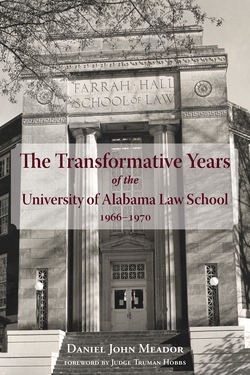Читать книгу The Transformative Years of the University of Alabama Law School, 1966–1970 - Daniel Meador - Страница 12
На сайте Литреса книга снята с продажи.
4 Academic Program
ОглавлениеCurriculum and faculty are interrelated. The former is dependent on the latter, and the latter determines the former. Increasing the number of faculty, as we were doing, permitted a widening of the range and diversity of subjects taught and kept individual faculty teaching loads at reasonable levels. This growth also allowed existing faculty to move into new areas of interest.
The relatively small pre-1966 faculty meant that few electives were offered. Faculty teaching had to be devoted to the traditional, hard-core, required subjects: Torts, Contracts, Property, Criminal Law, Constitutional Law, Commercial Transactions, Corporations, Conflict of Laws, Evidence, and Taxation. The trend in American legal education at that time was toward allowing students greater leeway in choosing subjects after the first year. With an enlarged faculty we moved in that direction. The third year was made almost entirely elective, the only required offerings being Commercial Transactions, Legal Profession, and a seminar. The second year was also opened up to some electives. Professor Samuel A. Beatty chaired the faculty curriculum committee which kept the course offerings under continual review.
Civil Procedure presented a difficult curriculum problem because of Alabama’s arcane system of common law and equity pleading; law and equity remained divided with unreformed intricate pleading rules. For years separate law and equity pleading courses were understandably considered necessary to prepare students to practice law in the state. But that then left Alabama students unexposed to the modern procedural systems used in most of the country, and it reinforced the outdated system, as students knew of no better way and lacked interest in change. Thinking it imperative to do something about this, we made the two pleading courses electives and introduced a new five-hour required course in Civil Procedure in the first year. This gave our students the kind of modern procedure course that was increasingly being adopted by law schools across the country.
